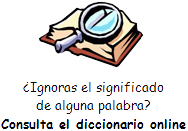| Five Tips for Planning a Presentation
English is the language of many international
conferences. Sometimes a speaker might use a kind of “World English”
that audience members do not understand. This can be true even for
listeners who are native speakers of English.
For this reason, Professor Charles Lebeau says the visual message is
important. The visual message includes pictures, charts and other aids a
speaker presents during the talk. A non-native speaker of English can
understand a picture. It can help carry the message when the presenter’s
words are hard to understand.
“The visual message becomes a central part of the communication process
because everyone can understand a graph; everyone can understand a flow
chart; everyone can see the words on the slide.”
When you prepare a presentation, you might want to show how much you
know about a subject. But does the audience care how much you know?
Listeners more likely want to understand the main point of your
presentation. So, how do you organize your talk to get that point across?
Professor LeBeau says this can depend on the culture of your audience.
Cultural styles of presenting ideas
American language expert Robert Kaplan studied different cultural
thought patterns in the mid 1960s. He helped English language teachers
understand the differences between English rhetoric and that of Arabic,
Chinese, Japanese, Spanish, and Russian.
English speakers prefer a ‘linear’ style, which has
one main idea. The speaker supports that idea with details or arguments,
and then closes the talk by restating the idea. In other cultures,
however, speakers may bring in other ideas before returning to the main
point.
Charles LeBeau says some of his students prepare a speech without
thinking of the main idea.
“Sometimes the bigger problem is the point that they want to make is not
clear. They are not thinking clearly about “What is the key point in my
presentation? And how do I want to say that, where do I want to say it?”
For presentations in English, the best time to make that point is at the
beginning. Speakers should make a plan to present their ideas in the
order that is common in English rhetoric. When we write our ideas down
without such a plan, they are not clear and our presentation will not be
well organized.
“I think they prepare the presentation kind of as a stream of
consciousness activity, then finally at the end of this process they
figure out, oh, what do I want to say, what is the key point in this?
And it ends up being at the end of the presentation.”
Professor LeBeau says he often sees the engineers he works with give a
lot of technical information in their speeches. They want to tell
everything they know. But, the audience may have trouble understanding
which information is related to the speaker’s main point. We can tell
the story with facts and numbers, if they help, and then repeat the
point.
“In an English language presentation, what we try and do is make it more
linear. And by that, I mean, it’s more of a story - we use data, and we
use evidence, we use numbers, but only to help us tell the story more
clearly.”
Five tips for preparing your presentation
Preparing the story message helps speakers give a successful
presentation. Professor LeBeau gives these five tips for academic
presentations, such as those given at professional conferences.
1. Understand the difference between a title and a topic. A topic is
general, but a title is more specific. Make sure the title explains the
benefit of your subject.
2. Provide an image for those who are not experts in your subject.
Explain how your research relates to other fields.
3. Work on transitions (linking words or phrases) as you go from image
to image. These should make the connections between your ideas clear.
Professor LeBeau says transitions serve as bridges to each new image.
4. Look at each image from the audience’s point of view. What questions
might they have about each image? Prepare an extra image that would help
explain the most difficult question you expect.
5. Rehearse your presentation with a timing device. At most conferences,
there is a time limit. It is disrespectful to take more than your share
of the time. Cut your presentation to fit the time you are permitted.
Professor LeBeau understands the difficulty many students of public
speaking face.
“Learning a new culture for presentation is really really tough for many
people, as it is with all language learning. Presentation, or course, is
a part of language learning. There’s culture in everything we do in
English, as well as in presentation.”
Using these tips for improving your presentations in English should help
make the process easier. |
![]() ).
Utiliza el botón derecho del ratón y "guardar enlace" para descargar el
fichero a tu PC, tablet, Smartphone, etc.
).
Utiliza el botón derecho del ratón y "guardar enlace" para descargar el
fichero a tu PC, tablet, Smartphone, etc.![]() Escucha el audio
Escucha el audio



